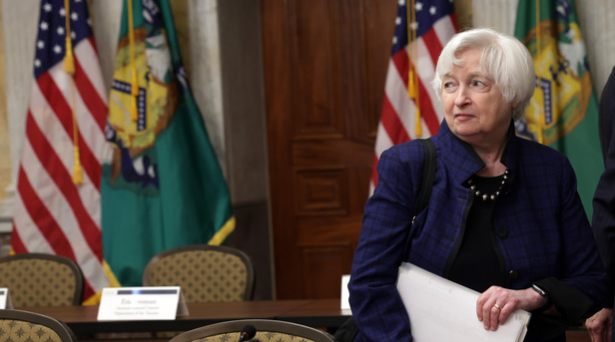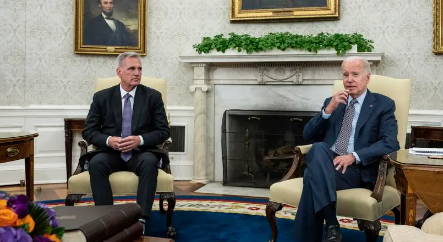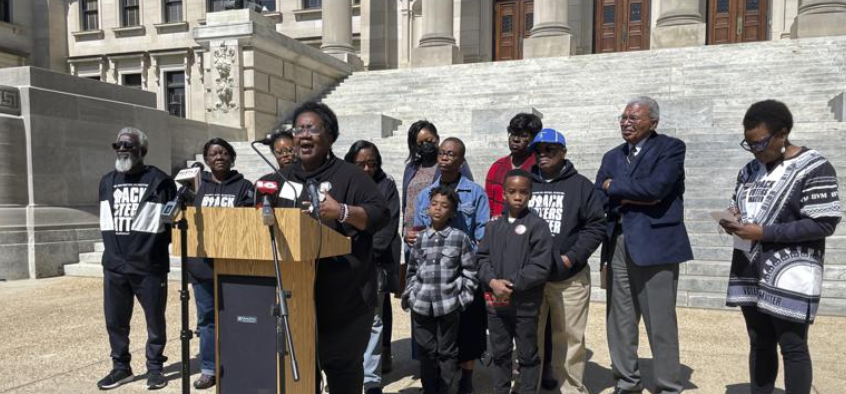
‘This puts additional pressure on us': Yellen updates default deadline
Treasury Secretary Janet Yellen said Friday that lawmakers now have until June 5 to raise the nation’s debt limit and avoid a catastrophic default, providing a bit more breathing room for negotiators haggling over a bipartisan deal.
The new deadline comes as House Republicans and the White House inch closer to an agreement that could lift the nation’s $31.4 trillion borrowing cap for two years and limit federal spending for the same amount of time.
Yellen previously said the government could breach the debt ceiling as soon as June 1. But her latest estimate gives lawmakers a few more critical days to cement a deal and work through several intractable issues that include spending cuts, tougher work requirements for federal benefits and energy permitting reforms.
The so-called X-date, or when the government officially can’t pay the bills on time, is subject to considerable variability based on the unpredictable nature of federal cash flow. Yellen’s conservative estimate up until now has earned criticism from Republicans, who argued that the June 1 deadline was nothing more than a political ploy meant to squeeze the GOP in negotiations.
“In many respects, it’s an answer to what House Republicans were questioning about the X-date. Now we know, and this puts additional pressure on us,” said House Financial Services Chair Patrick McHenry (R-N.C.), one of the Republican negotiators.
“We’re in the window by which we meet the June 5 deadline. It’s not over. We’re not done. But we’re within the window of being able to perform this and we have to come to some really tough terms in these closing hours,” he added.
But in a new letter to congressional leaders, Yellen said the Treasury Department can make more than $130 billion in scheduled payments the first two days of June, “including payments to veterans and Social Security and Medicare recipients.” Doing so will leave the department “with an extremely low level of resources,” Yellen wrote, necessitating congressional action to raise the borrowing cap so the government can keep paying the bills on time.
White House and Republican negotiators are closing in on a compromise that could freeze non-defense spending somewhere below current funding levels, striking a middle ground between funding cuts Republicans originally demanded and the stagnant spending pitched by the White House. Defense spending could be set at the level proposed in his budget for the coming fiscal year.
Up until now, it hasn’t been clear whether the Treasury Department can maintain enough borrowing power until June 15, when tens of billions of dollars will begin to flow in from corporations, self-employed people and some other taxpayers required to pay estimated taxes on a quarterly basis.
But Yellen’s latest estimate confirms that the government will likely run out of money well before then.
Interest payments on the debt — seen as a critical financial obligation that the U.S. can’t miss without sparking global panic — are also due on June 15. While a missed interest payment would technically signal a default, the leadup to that unthinkable scenario would deal its own damage, compounded each day as people potentially miss checks, investors get skittish about shouldering U.S. debt and the nation’s credit rating risks an embarrassing downgrade.




























